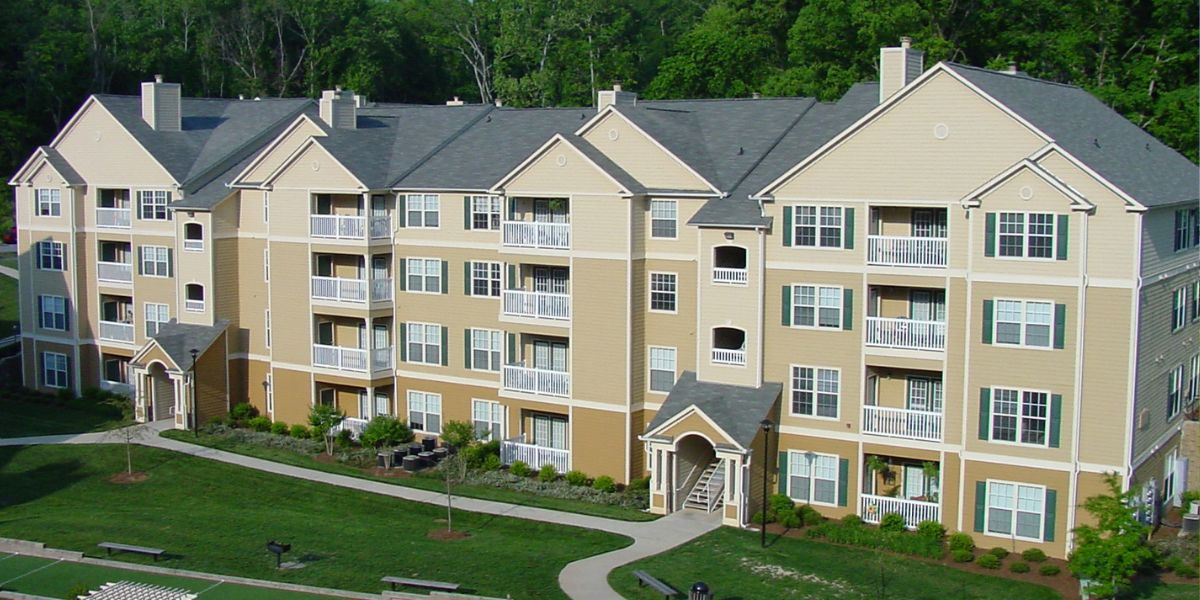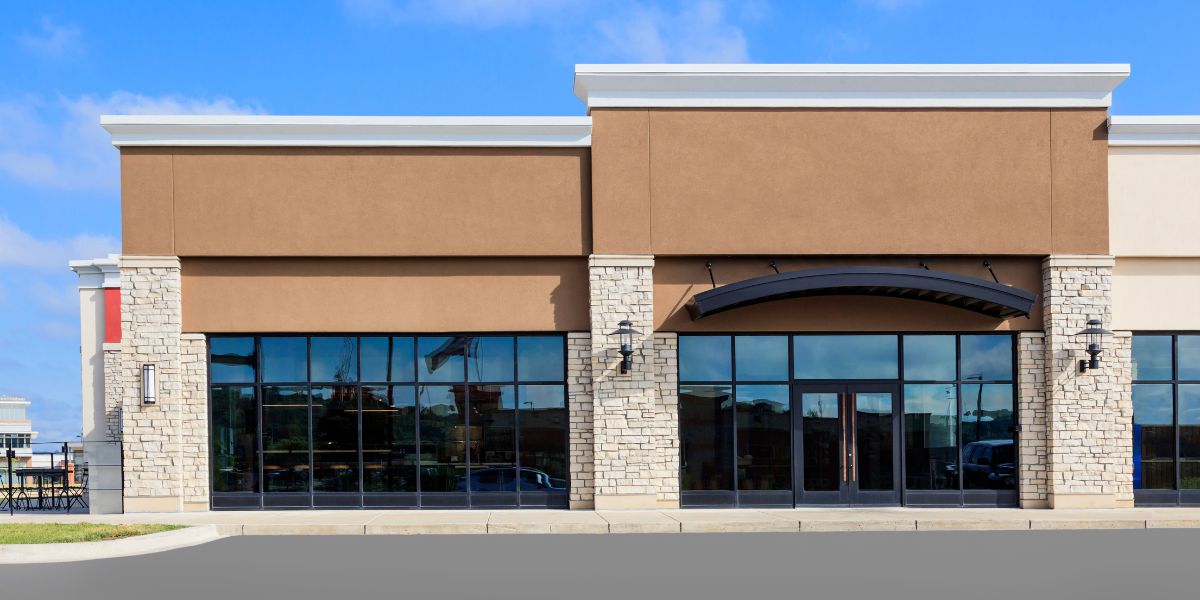When you buy something through one of the links on our site, we may earn an affiliate commission.
Introduction
Selling an investment property? A 1031 exchange might be your ticket to deferring capital gains taxes. This strategy allows you to reinvest the sale proceeds into another “like-kind” property—delaying your tax bill and boosting your long-term wealth.
Now, what if you’re eyeing residential rental properties? Think single-family homes, duplexes, triplexes, or fourplexes. These are popular choices—but are they the right fit for your investment strategy?
In this guide, we’ll break down the benefits, challenges, and potential alternatives to using a 1031 exchange for residential property. By the end, you’ll know whether this route fits your financial goals.

Why Use a 1031 Exchange for Residential Rentals?
Tax Deferral and Wealth Preservation
The most obvious benefit of using a rental property in a 1031 exchange is the ability to defer capital gains taxes, including federal, state, and depreciation recapture. This allows you to reinvest your full proceeds into another investment property, keeping more of your money working for you and preserving long-term wealth.
Steady and Predictable Cash Flow
Residential rental properties, especially in areas with strong demand, often provide consistent monthly income. Unlike commercial properties, which may experience long vacancy cycles, 1–4 unit rentals tend to fill more quickly, keeping your income stream more stable.
Accessible Financing Options
Financing residential properties is generally more straightforward than securing loans for apartments or commercial real estate. Reidential rentals up to and including a fourplex can be financed with residential mortgage loans. Residential mortgages are often lower cost, faster, and a much simpler process than an apartment or commercial loan.
Lower Management Complexity
Managing 1–4 unit properties is typically simpler than overseeing large multifamily buildings or commercial real estate. For hands-on investors, self-management is feasible. For those who prefer less involvement, hiring a property manager (usually at 8–12% of rent) can make ownership relatively passive.
Long-Term Appreciation and Equity Growth
Residential real estate has a strong track record of appreciation over time. When you use a 1031 exchange to trade up or diversify into multiple properties, you not only defer taxes—you also amplify your equity-building potential across different markets or property types.
Easier to Identify and Acquire Properties
One of the biggest challenges in a 1031 exchange is the tight 45-day identification window. In many markets, it’s significantly easier to find and evaluate residential rental properties compared to commercial or large multifamily assets. There’s simply more inventory, more listings, and more transactional activity in the 1–4 unit space.
Because residential rentals are so common, you can often identify multiple qualifying properties quickly, giving you more flexibility and reducing the risk of missing your identification deadline. This makes residential real estate an attractive option for investors who want a smoother, faster acquisition process within the 1031 timeline.
Key Considerations Before Choosing Residential Rentals

Complying With 1031 Exchange Rules
If you’re planning to use a 1031 exchange to defer capital gains taxes, it’s critical to follow the IRS’s rules carefully. These exchanges offer powerful tax advantages, but they come with strict requirements. Even minor missteps can disqualify the transaction, resulting in an unexpected tax bill. Below are the key areas to understand to stay compliant.
Investment Use Requirement
First and foremost, both the property you sell (the relinquished property) and the property you purchase (the replacement property) must be held for investment or business purposes. This means the properties must be used to generate rental income or serve a business function. You cannot use a 1031 exchange to purchase a primary residence, vacation home, or second home. Even limited personal use can trigger disqualification. In the case of residential rentals, the IRS generally expects you to rent the property for a significant period—typically 12 to 24 months—to demonstrate that your intent is truly for investment.
Time-Sensitive Deadlines
Once your relinquished property closes, the 1031 exchange timeline begins. From that point, you have 45 calendar days to identify one or more replacement properties. This identification must be in writing and submitted to your qualified intermediary (QI), who is managing the exchange. You then have a total of 180 calendar days from the date of sale to complete the purchase of one or more of those identified properties. These two periods run concurrently, not consecutively. For example, if you take 45 days to identify properties, you’ll have 135 days left to close.
These deadlines are non-negotiable and strictly enforced. Missing them—by even a day—means your exchange will not qualify, and you will be liable for capital gains and depreciation recapture taxes.
Equal or Greater Value Requirement
To defer all of your capital gains taxes, the value of the replacement property (or properties) must be equal to or greater than the sale price of the relinquished property. In addition, you must reinvest all the net proceeds from the sale, and the debt on the replacement property must be equal to or greater than the debt on the property you sold. If you purchase a property of lesser value, fail to reinvest all the proceeds, or reduce your mortgage debt without replacing it with cash, you will owe taxes on the difference. This taxable portion is referred to as “boot.”
Role of a Qualified Intermediary
You are not allowed to take possession of the proceeds from the sale of your relinquished property. To comply with 1031 exchange regulations, those funds must be held by a qualified intermediary (QI). The QI is a third-party professional who facilitates the exchange, holds your sale proceeds in escrow, and ensures all documentation and deadlines are met in accordance with IRS rules. It is essential to choose an experienced and trustworthy QI, as any error in handling the funds or paperwork can invalidate the entire exchange.
Special Considerations for Residential Properties
Although residential rental properties are eligible for 1031 exchanges, they must be treated as true investments. You cannot move into the property immediately after the exchange or use it for personal purposes. To clearly demonstrate investment intent, most tax advisors recommend holding the property as a rental for at least one to two years. Converting the property to a primary residence too soon could lead to disqualification and tax exposure.
Potential Drawbacks and Risks

1. Lower Cash Flow Compared to Commercial Properties
Residential rental properties can generate steady income, but they typically produce lower cash flow than commercial properties or large multifamily assets. For many investors, this trade-off becomes a key factor when selecting a 1031 exchange replacement.
Shorter Leases = More Turnover
Residential leases usually last 12 months or less. That means more frequent turnover—and more recurring costs. Each vacancy can bring expenses for advertising, tenant screening, cleaning, and repairs. These costs eat into your cash flow, especially in competitive markets or when vacancies rise.
Additionally, residential rent increases tend to be modest and slower-paced. In areas with rent control or strict tenant protections, your ability to raise rents may be further restricted.
Commercial Properties Offer More Stability
Commercial assets—such as office buildings, retail centers, and industrial spaces—often have multi-year leases with built-in rent escalations. These longer-term agreements reduce turnover and create more predictable income streams. Some commercial deals even use triple-net (NNN) leases, where tenants cover most or all operating expenses (including taxes, insurance, and maintenance). This shifts the financial responsibility away from the landlord, resulting in a more passive investment.
Economies of Scale with Larger Multifamily
Multifamily properties with five or more units can also deliver higher cash flow per dollar invested. Why? Economies of scale. It’s usually more cost-efficient to manage ten units in one building than ten single-family homes spread across different locations. Services like property management, maintenance, and landscaping are easier and cheaper to centralize.
Larger properties may also allow for upgrades—like shared amenities or unit renovations—that justify higher rents and attract long-term tenants.
Financing Terms Can Tip the Scale
Loan structure also plays a role in cash flow. Commercial and multifamily loans sometimes offer interest-only periods or non-recourse terms, which can improve monthly cash flow and limit personal liability. In contrast, residential investment loans are typically fully amortizing, which means higher monthly payments from the start.
Residential Still Has Its Place
Despite lower cash flow potential, residential rentals come with notable benefits: easier entry points, more accessible financing, and broader availability. They can be a great fit for investors focused on diversification, long-term appreciation, or lower tenant risk.
However, if your primary goal is maximizing short-term income, commercial or multifamily properties may offer a more compelling return profile.
2. Risk of Vacancy and Problem Tenants
A significant vulnerability of residential rental properties is their reliance on consistent tenant occupancy. When a unit remains vacant, income stops, but expenses—such as mortgage payments, property taxes, insurance, and maintenance—continue. Unlike commercial leases, which are often longer-term, residential leases tend to be short-term—usually 12 months or even month-to-month. This leads to more frequent turnover, heightening the vacancy risk.
Vacancies Can Drain Your Returns
Vacancies can have a direct negative impact on your cash flow. Even a short vacancy period interrupts your income stream, yet expenses remain constant. In tight-margin markets, a few weeks of vacancy can substantially affect your annual return. This risk is heightened in areas with seasonal rental patterns or economic instability, where tenant demand may fluctuate, or finding qualified applicants becomes challenging. The longer a property stays vacant, the more income is lost—and this loss is harder to recover.
Problem Tenants = Hidden Costs
Tenant quality significantly impacts your overall profitability. Problem tenants can lead to various issues, including late rent payments or nonpayment altogether, damage to property, violations of lease terms, and difficulty in removing them from the property. These issues often require costly and time-consuming legal action, particularly evictions. In tenant-friendly states like California, New York, and Oregon, eviction processes can become even more complex, with laws requiring “just cause” for eviction, extended notice periods, and court approval before a tenant can be removed. While these regulations protect renters, they also increase risk for landlords, especially during economic downturns.
Life Happens, Even with Good Tenants
Even responsible tenants can experience unforeseen circumstances, such as job loss, medical issues, or family emergencies, leading to rent delays or unexpected move-outs. Although tenant screening and solid lease agreements can mitigate these risks, they cannot eliminate the possibility of life’s unpredictability.
Turnover Adds Up
Tenant turnover comes with costs, even when tenants leave on good terms. You’ll likely face expenses for cleaning, painting, minor repairs, and marketing the property to find new tenants. In cases of neglectful or hostile tenants, you may need to rehab an entire unit before re-renting it. These costs can add up quickly, affecting both your time and budget.
Plan Ahead to Minimize the Damage
While vacancies and difficult tenants are inherent risks of owning rental real estate, they can be mitigated with careful planning. It’s essential to budget for potential vacancy loss (typically 5-10% annually), set aside funds for unexpected repairs, and ensure you screen tenants carefully. Staying informed about local landlord-tenant laws and working with a reputable property manager can further reduce the stress of managing these challenges.
Although these risks are more prominent in residential real estate, a proactive approach can help you manage volatility, protect your returns, and maintain consistent cash flow over time.
3. Regulatory and Legal Hurdles
Residential rental properties can deliver solid appreciation and steady income, but they also come with increasing layers of regulatory and legal complexity. Investors must stay alert to how local and state policies—ranging from rent control to zoning ordinances—can directly impact both income potential and long-term strategy.
Rent Control: The Cap on Your Cash Flow
Rent control is a significant factor in many high-demand markets like Los Angeles, San Francisco, New York, and Portland. These laws typically limit how much landlords can increase rent each year, how frequently those increases can occur, and under what circumstances a tenant can be removed. Even after a lease expires, you might not be able to evict a tenant unless you meet specific “just cause” requirements.
While these rules aim to protect renters, they can compress profit margins—especially when operating costs, insurance premiums, or property taxes rise faster than permitted rent increases. Over time, this mismatch can erode your cash flow and limit your ability to reinvest in the property or adapt to changing market conditions.
Zoning Laws: Invisible Barriers to Growth
Zoning laws play a powerful but often underestimated role in shaping what you can do with your property. They determine permissible uses, regulate structural changes or additions, and restrict the number of legal occupants per unit. This can severely limit your ability to add income-producing elements like a duplex conversion or an accessory dwelling unit (ADU). In many cities, such changes require extensive permitting and public review, and noncompliance can result in delays, penalties, or costly rework—cutting into your timeline and bottom line.
Tenant Protection Laws: More Rules, Less Control
Beyond rent caps, investors must also navigate a growing set of tenant protection laws that govern nearly every aspect of the landlord-tenant relationship. These rules may limit security deposits, regulate what criteria you can use to screen applicants, and dictate how much notice you must give before raising rent or ending a lease. In some areas, landlords are even required to offer relocation assistance if a tenant is displaced due to renovations or redevelopment.
For landlords who self-manage or own multiple units, these legal obligations can be burdensome and leave little room for flexibility. Missteps—however unintentional—can lead to fines, lawsuits, or prolonged vacancies while compliance issues are resolved.
The Legal Landscape Is Constantly Changing
Perhaps the most difficult aspect of real estate regulation is its ever-evolving nature. Local and state governments continue to introduce new rules aimed at increasing tenant protections, expanding rent control, and reducing housing costs. What’s permissible today may become restricted tomorrow, and staying ahead of these shifts is essential.
Successful investors often rely on a proactive legal and operational strategy. That might include working with real estate attorneys familiar with local ordinances, partnering with professional property managers who stay current on regulatory changes, and regularly updating lease agreements and screening procedures. Factoring legal and compliance costs into your budget is no longer optional—it’s part of being prepared.
Regulation = Risk, But Also Opportunity
While it’s true that legal hurdles can complicate investment plans, they can also signal high-demand markets with long-term upside. Places with stricter tenant protections often have limited housing supply and sustained rental demand—two ingredients that support long-term appreciation and occupancy stability.
The key is understanding the rules, planning for compliance, and building enough flexibility into your investment strategy to thrive even in highly regulated environments.
4. Financing Can Be More Complex Than Expected
Financing a residential investment property is different from financing a primary home. Although getting a loan for a 1–4 unit residential property is typically easier than financing a commercial building, lenders still apply stricter standards to non-owner-occupied homes due to higher risk.
Expect Higher Rates and Larger Down Payments
One of the first things investors notice? Higher interest rates. Loans for investment properties often come with rates 0.5% to 1% above those for primary residences. Lenders also require bigger down payments—typically 20% or more—and fewer loan options. For example, FHA and VA loans are only available to owner-occupants, so most investors rely on conventional or portfolio loans.
Understanding How Lenders Evaluate You
Many assume residential lenders use a debt service coverage ratio (DSCR) like commercial lenders do. But for 1–4 unit properties, most traditional lenders look at your personal financial profile instead. They focus on your debt-to-income (DTI) ratio, credit score, and available reserves. Typically, your back-end DTI must fall below 43% to 50%, depending on the lender.
Rental income from the property can help offset the mortgage payment. Lenders usually calculate this using a lease agreement or an appraiser’s market rent estimate (Form 1007).
Refinancing After a 1031 Exchange
Planning to refinance after your 1031 exchange? It’s possible—but there are caveats. Some lenders require a “seasoning period,” which means holding the property for 6–12 months before refinancing or taking cash out. If you refinance too soon, the IRS might view it as a workaround to access sale proceeds, which could put your tax-deferred status at risk.
Factor in Liquidity Limits
To fully defer taxes with a 1031 exchange, you must reinvest all proceeds into your replacement property. This limits your liquidity. If you’re planning to tap into equity later, be sure to understand your lender’s policies, current market conditions, and how long you’ll need to wait before refinancing.
Financing a residential investment property may be more accessible than commercial funding, but it still comes with its own rules, risks, and restrictions. Knowing what to expect upfront can help you plan smarter and avoid surprises.
Alternatives to Residential Rentals in a 1031 Exchange

If residential rentals don’t align with your investment goals, there are several other replacement property types to consider:
1. Multifamily (5+ Units)

Investing in larger multifamily properties (5+ units) as part of a 1031 exchange offers substantial opportunities but comes with its own set of complexities. These properties occupy a unique position between small residential rentals and commercial real estate, presenting distinct advantages for investors aiming to scale their portfolios while maintaining a connection to residential housing dynamics.
Key Benefits of Multifamily Properties
Higher Cash Flow and Economies of Scale
The biggest draw of multifamily properties is their ability to generate higher rental income. With multiple units in one building, investors benefit from:
- Diversified income streams: Rent from multiple tenants helps stabilize cash flow and reduces the impact of vacancies. A single vacancy in a 12-unit property has far less financial effect than in a single-family home.
- Cost efficiency: Shared maintenance costs, such as roof repairs or parking lot repaving, benefit all units at once. This stands in contrast to single-family homes, where each property requires individual attention and expense.
These factors create a more stable and predictable income flow, which is especially appealing in fluctuating rental markets.
Commercial Lending and Underwriting
Once you cross the threshold of five units, multifamily properties fall into the realm of commercial real estate lending. Key differences in financing include:
- Income-based underwriting: Lenders base loan eligibility on the property’s Net Operating Income (NOI) rather than the borrower’s personal financial profile. This is advantageous if the property generates solid income but can make it harder for investors without a strong rental history or a large down payment.
- Debt Service Coverage Ratio (DSCR): Most lenders expect a DSCR of 1.25x or higher—meaning the property’s rental income must cover the mortgage payment with an additional 25%.
- Loan terms: Expect shorter amortization periods (typically 20–25 years versus the standard 30 years for residential properties) and higher interest rates. Additionally, balloon payments may apply, which could require refinancing or lump sum payments after a set period.
Management Demands and Operational Scale
As your property portfolio scales, so do the demands on management. What may start as a part-time project with a few single-family homes can become a substantial operational task with multifamily properties. Considerations include:
- Tenant turnover: More units mean more tenants, which leads to higher turnover rates and greater administrative oversight.
- Maintenance issues: The density of residents results in more frequent maintenance requests and potential interpersonal conflicts among tenants.
To manage these demands efficiently, many multifamily investors hire professional property managers, which can cost anywhere from 4-8% of collected rents. These services help streamline operations, making the investment more passive but at a cost.
Regulatory Considerations for Multifamily Properties
Larger residential properties are subject to more stringent local regulations than single-family rentals. Some challenges include:
- Licensing and inspections: Many municipalities require special licensing or periodic inspections for buildings with multiple units.
- Fair housing compliance: Fair housing laws apply with particular scrutiny to larger properties, so maintaining compliance with tenant screening and retention policies is crucial.
This makes it important to stay updated on local building codes and housing laws to avoid legal pitfalls.
Are Multifamily Properties the Right Choice for Your 1031 Exchange?
For investors ready to scale their portfolios, multifamily properties can offer attractive returns while still operating within the familiar residential housing market. However, they also require:
- Strong management skills
- Sufficient capital
- Access to experienced professionals for financing and operations
Those who are prepared to meet the operational demands and navigate the regulatory landscape can find multifamily properties to be an excellent vehicle for long-term growth through a 1031 exchange. By leveraging economies of scale, these properties offer an ideal balance of residential stability and commercial-level returns.
2. Commercial Real Estate

For investors considering commercial real estate—which includes office buildings, retail spaces, industrial warehouses, and mixed-use developments—via a 1031 exchange, this asset class offers unique opportunities and challenges compared to residential investments. Commercial properties operate on distinct economic principles, providing potentially higher yields but requiring more specialized knowledge and a higher risk tolerance.
Key Advantages of Commercial Properties
Stable Income from Long-Term Leases
One of the most significant benefits of commercial properties is their lease structure. Unlike the shorter-term, month-to-month or annual leases typical of residential properties, commercial tenants often sign multi-year leases—ranging from 3 to 10 years for office or retail spaces, and even longer for industrial properties. These extended lease terms offer:
- Stable and predictable income with much less tenant turnover than residential properties.
- Triple net (NNN) leases: Many commercial leases are structured so that tenants cover property taxes, insurance, and maintenance costs. This “hands-off” setup reduces the financial burden on the property owner, providing a more passive income stream.
- In gross leases, where landlords may cover some expenses, commercial tenants—being businesses—often maintain properties to higher standards and may even invest in tenant improvements, such as remodeling or custom-built fixtures.
Management Complexity vs. Day-to-Day Involvement
From a management perspective, commercial properties offer a blend of both more sophisticated requirements and less day-to-day involvement. Considerations include:
- Specialized lease negotiations and tenant improvements (such as custom-built office spaces) require professional knowledge and expertise.
- Maintenance issues tend to focus on complex systems like HVAC or compliance with zoning regulations, which may be less frequent than residential property concerns (e.g., fixing broken appliances or handling noise complaints).
- Professional property management is highly recommended, as it allows investors to focus on growing their portfolio while experts handle operational details like tenant improvement allowances and common area maintenance (CAM) costs.
Financing Challenges and Opportunities
Financing commercial real estate can be more intricate than residential property financing. Key factors include:
- Income-based underwriting: Commercial loans are primarily evaluated based on the income-generating potential of the property, rather than the borrower’s personal finances. This benefits investors with strong assets but lower W-2 earnings.
- Higher down payments: Lenders typically require 25-35% down payments (compared to 20-25% for residential properties).
- Debt service coverage ratio (DSCR): Most lenders expect a DSCR of 1.25x or higher, meaning the property’s income should exceed mortgage payments by at least 25%.
- Interest rates: Expect interest rates to be 50-150 basis points higher than residential loans. Additionally, loans often feature 5-10 year balloon payments and amortization periods of 20-25 years.
- Appraisal process: Commercial property appraisals rely on capitalization rates (cap rates) and comparable income-producing properties, rather than residential price-per-square-foot comparisons.
Market Sensitivity and Tenant Quality
Commercial real estate markets are more sensitive to economic fluctuations than residential markets. Key considerations include:
- Economic cycles: Office space vacancies increase during recessions, while retail properties face disruption from the growth of e-commerce. Conversely, industrial spaces (such as warehouses) may experience growth during the same periods.
- Tenant creditworthiness: The quality of tenants is paramount. National, creditworthy tenants—like pharmacies or grocery chains—command premium rental prices, while local tenants may offer higher yields but come with greater risk.
- Vacancy periods: Commercial vacancies tend to last longer than residential vacancies—ranging from 6 months to 2 years—especially for specialized spaces (like medical offices or retail locations). Re-tenanting these spaces often requires significant capital expenditures to customize the space to suit the new tenant’s needs.
Is Commercial Real Estate Right for Your 1031 Exchange?
For investors with the appropriate expertise or professional guidance, commercial real estate can provide compelling opportunities in a 1031 exchange. Benefits include:
- Diversification beyond residential holdings
- Higher potential returns due to longer leases and tenant stability
- Inflation-protected income through rent escalations built into commercial leases
However, these advantages come with increased complexity. Commercial investors must conduct thorough due diligence on market fundamentals, tenant creditworthiness, and property-specific operational factors. Successful investors often either:
- Specialize in specific property types (e.g., medical offices or last-mile warehouses)
- Partner with experienced operators to navigate the complexities of the market
3. Delaware Statutory Trusts (DSTs)

For investors seeking a truly passive approach to 1031 exchanges, Delaware Statutory Trusts (DSTs) offer a compelling solution. These SEC-regulated investment vehicles allow multiple investors to own fractional interests in large, institutional-quality commercial properties, such as apartment complexes, medical office buildings, industrial warehouses, or net-leased retail spaces, typically valued between $20 million and $100 million.
Turnkey Investment with Professional Management
The main appeal of DSTs lies in their turnkey nature. Investors can participate in high-quality properties that would normally require millions of dollars in capital, without assuming the responsibility for day-to-day management. Professional asset managers handle everything—from tenant leasing to maintenance and roof repairs—making DSTs especially attractive for retirees, busy professionals, or anyone seeking passive income. The structure also provides built-in diversification, as some DST sponsors offer portfolios that span multiple properties and geographic locations, spreading risk across a range of assets.
1031 Exchange Advantages of DSTs
From a 1031 exchange perspective, DSTs offer significant advantages. They qualify as “like-kind” replacement properties, allowing investors to use them as a vehicle for deferring capital gains taxes on the sale of a previous property. One of the primary benefits is the minimal time required to identify and acquire the replacement property, which is crucial given the strict 45-day identification period of the 1031 exchange. Investors can deploy their entire exchange proceeds into a DST, or use it to park a portion of funds while continuing to search for other properties. Additionally, because of the institutional ownership structure, investors are not personally liable for the property-level debt, as mortgages are non-recourse to individual investors.
Limitations of DSTs
Despite the convenience, DSTs come with certain limitations. Perhaps the most notable is the loss of control over property management decisions. Investors have no say in lease terms, capital improvements, or when the property is sold—these decisions are entirely at the discretion of the professional sponsor. Additionally, DST investments are illiquid, as there is no secondary market for buying and selling shares. Investors are typically required to hold their investment for a period of 5 to 10 years, until the sponsor sells the underlying property. Distributions from DSTs may fluctuate depending on property performance, and fees tend to be higher than those associated with direct ownership—often around 2-3% in annual asset management fees, plus a share of profits when the property is sold.
Market Evolution and Investment Strategies
The DST market has evolved significantly in recent years, with sponsors offering more transparency and diverse investment strategies. Some DSTs focus on stable cash flow through properties like medical office buildings with long-term leases, while others target value-add opportunities such as apartment complexes, which come with a higher risk/reward profile. Minimum investments typically range from $25,000 to $100,000, making DSTs accessible to smaller investors who may not have the capital to directly invest in institutional-quality properties.
When DSTs Are Ideal for 1031 Exchangers
DSTs are particularly suitable for 1031 exchangers in two main scenarios:
- Temporary Parking Place: DSTs are ideal as a place to park funds temporarily during a delayed exchange, allowing the investor to meet the 45-day identification deadline without the pressure of rushing into another property purchase.
- Long-Term Passive Income: DSTs are also an attractive long-term solution for investors who prefer passive income over control and who do not have the time or expertise to manage properties directly. These investments are well-suited for those looking to diversify beyond their local real estate market.
However, due to the illiquid nature of DSTs, they may not be suitable for investors who anticipate needing quick access to their capital.
Due Diligence Is Key
As with any 1031 exchange option, due diligence is essential before committing to a DST investment. Investors should thoroughly evaluate the sponsor’s track record, the property fundamentals, fee structures, and debt terms. When used appropriately as part of a diversified strategy, DSTs can be a valuable tool for preserving capital and generating tax-deferred income. However, it is important to remember that DSTs are just one option in the broader 1031 exchange landscape.
How to Know if Residential Rentals Are the Right Fit

Ask yourself these important questions before deciding:
- Do I want active or passive management?
- Am I prepared to handle tenants, turnover, and maintenance?
- Does my target market show strong rental demand and growth?
- Am I aiming for immediate cash flow, long-term appreciation, or tax sheltering?
Real-World Case Study
Investor A rolled 1031 funds into a duplex in Texas. They earn $2,500/month in net cash flow but must handle tenant turnover and maintenance issues.
Investor B chose a Delaware Statutory Trust instead. They receive $1,800/month passively but lack control and flexibility.
Which strategy fits your lifestyle and goals better?
Conclusion: Is Residential Real Estate the Best 1031 Replacement for You?
Residential rentals can be an excellent replacement option for 1031 exchanges—especially if you want consistent cash flow, manageable financing, and are willing to handle some level of management. They’re accessible, flexible, and provide strong long-term potential.
However, if you’re seeking truly passive income, or want to pursue higher yields with less tenant involvement, alternatives like multifamily, commercial real estate, or DSTs might be more aligned with your objectives.
Next Steps
- Consult a 1031 exchange accommodator to ensure compliance with all IRS rules.
- Work with a qualified CPA to optimize your tax strategy.
- Research local markets carefully before purchasing your replacement property

